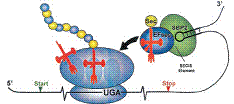Biochemistry, Department of

Vadim Gladyshev Publications
Document Type
Article
Date of this Version
April 2008
Abstract
The trace element molybdenum (Mo) is utilized in many life forms, where it is a key component of several enzymes involved in nitrogen, sulfur, and carbon metabolism. With the exception of nitrogenase, Mo is bound in proteins to a pterin, thus forming the molybdenum cofactor (Moco) at the catalytic sites of molybdoenzymes. Although a number of molybdoenzymes are well characterized structurally and functionally, evolutionary analyses of Mo utilization are limited. Here, we carried out comparative genomic and phylogenetic analyses to examine occurrence and evolution of Mo utilization in bacteria, archaea, and eukaryotes at the level of (i) Mo transport and Moco utilization trait, and (ii) Mo- dependent enzymes. Our results revealed that most prokaryotes and all higher eukaryotes utilize Mo, whereas many unicellular eukaryotes, including parasites and most yeasts, lost the ability to use this metal. In addition, eukaryotes have fewer molybdoenzyme families than prokaryotes. Dimethylsulfoxide reductase (DMSOR) and sulfite oxidase (SO) families were the most widespread molybdoenzymes in prokaryotes and eukaryotes, respectively. A distant group of the ModABC transport system, was predicted in the hyperthermophilic archaeon Pyrobaculum. ModE-type regulation of Mo uptake occurred in less than 30% of Moco-utilizing organisms. A link between Mo and selenocysteine utilization in prokaryotes was also identified wherein the selenocysteine trait was largely a subset of the Mo trait, presumably due to formate dehydrogenase, a Mo- and selenium- containing protein. Finally, analysis of environmental conditions and organisms that do or do not depend on Mo revealed that host- associated organisms and organisms with low GC content tend to show reduced Mo utilization. Overall, our data provide new insights into Mo utilization and show the wide occurrence, yet limited use, of this metal in individual organisms in all three domains of life.


Comments
Published in Journal of Molecular Biology (2008); doi: 10.1016/j.jmb.2008.03.051 Copyright © 2008 Elsevier. Used by permission. http://www.sciencedirect.com/science/journal/00222836